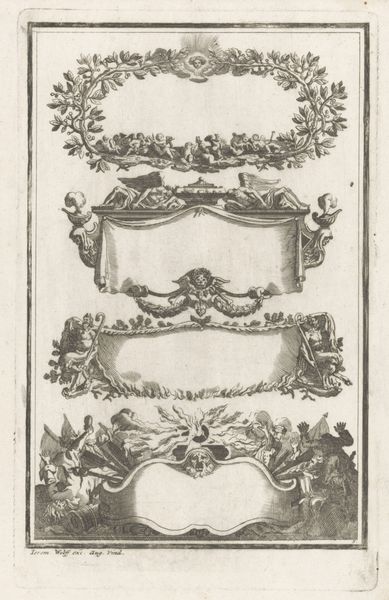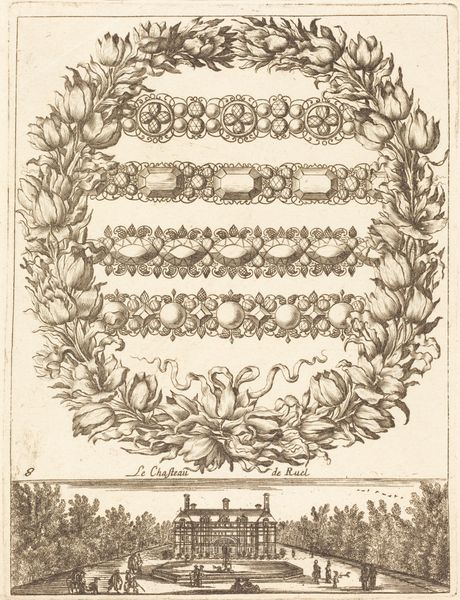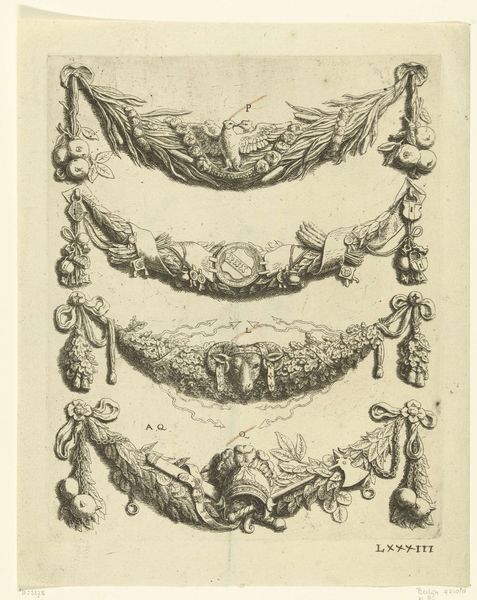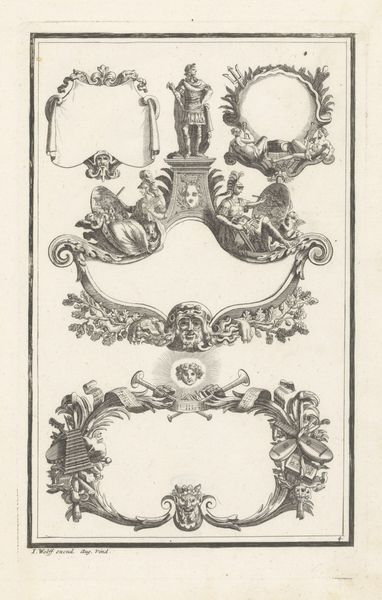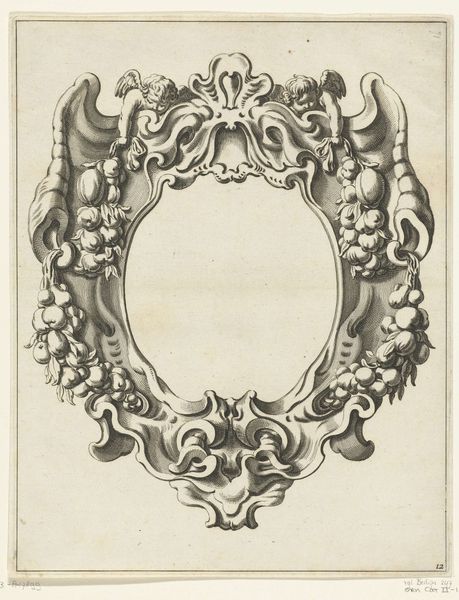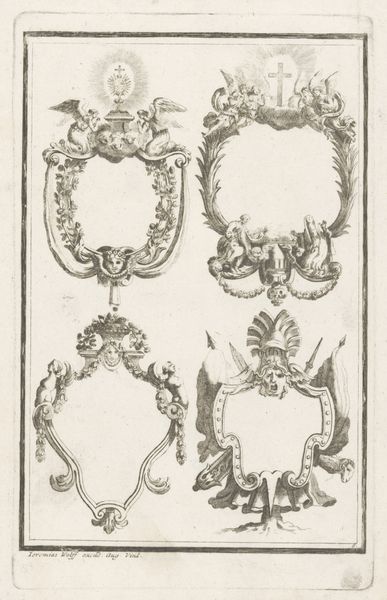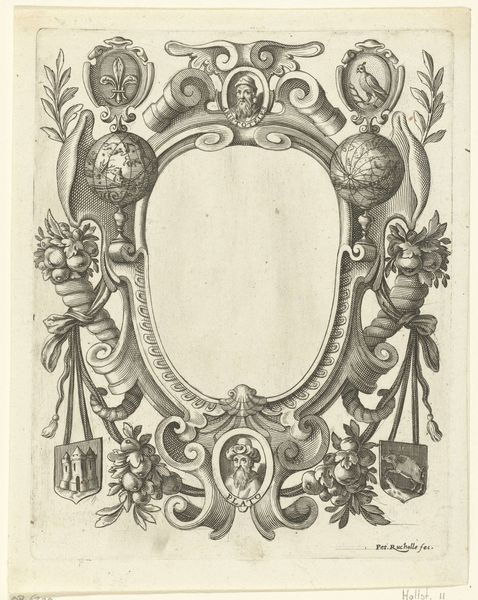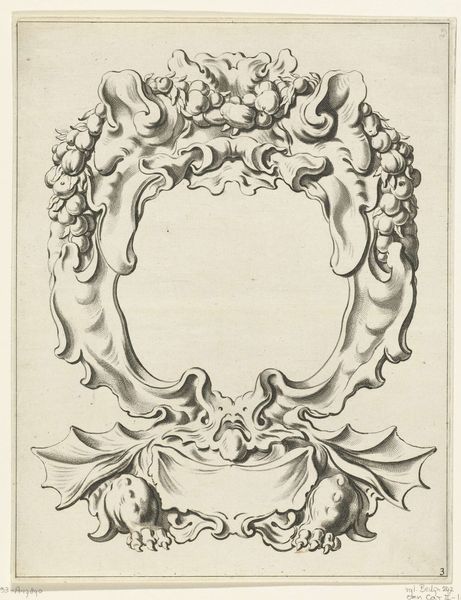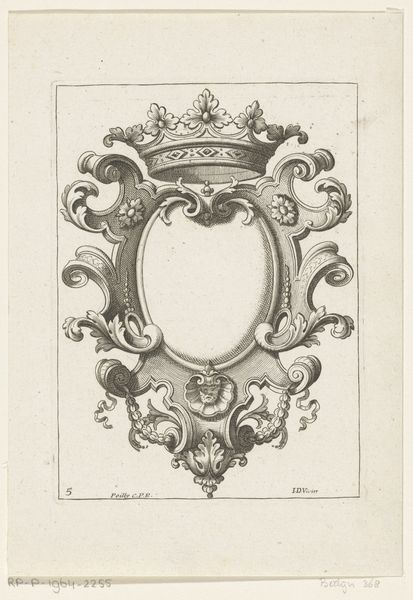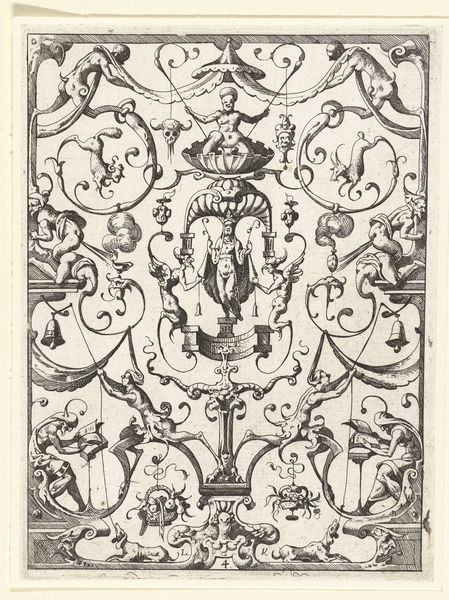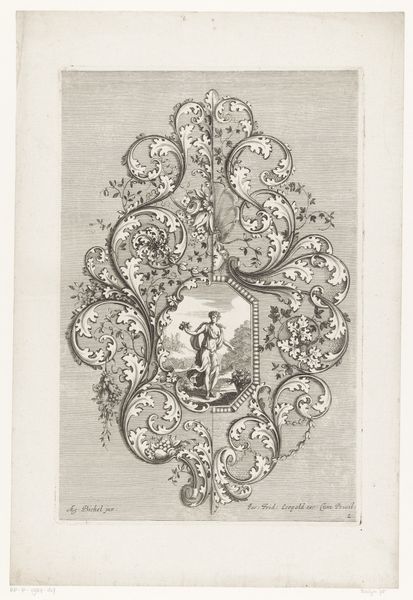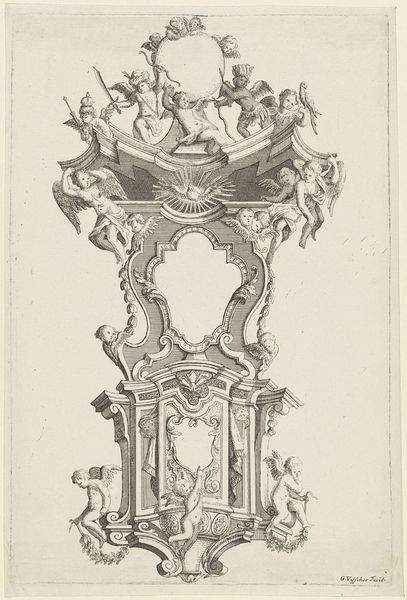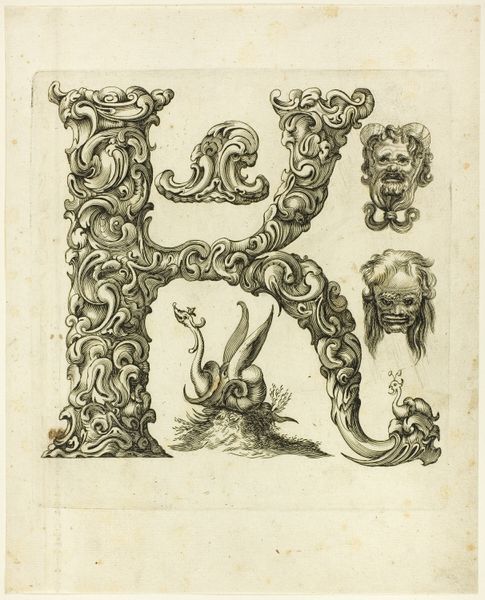
drawing, print, engraving
#
drawing
#
baroque
#
pen drawing
# print
#
old engraving style
#
form
#
line
#
decorative-art
#
engraving
Dimensions: height 251 mm, width 158 mm
Copyright: Rijks Museum: Open Domain
Curator: Here we have "Drie omlijstingen met figuren," or "Three Frames with Figures," a print created between 1673 and 1724, attributed to Johann Christoph Hafner and held in the Rijksmuseum. Editor: What strikes me first is the sheer intricacy. The dense hatching suggests a considerable investment of labor, cutting into the plate. It has a very ornamental feel; like metalwork, rather than paper. Curator: Yes, that density contributes to the sense of luxury it evokes, very characteristic of the Baroque. Notice how each frame is populated with symbolic figures; winged cherubs, laurel wreaths. Editor: Baroque loved a flourish, didn’t it? But what were these frames *for*? Were they designs to be copied, or…advertisements for Hafner's workshop? I’m curious about how artisans actually used pattern books like this. Curator: Good questions. These images operate on multiple symbolic levels. Consider the laurel wreath, a symbol of victory and honor dating back to antiquity, reinforcing concepts of success, beauty, and elevated status for any family or entity using this ornamental trope. These frames could be intended to ennoble, almost like heraldic devices. Editor: It is interesting to see this artistic labor reduced, eventually, to a printed page, reproducible en masse. One loses sight of the careful tooling that this implies. Curator: The image retains something essential of that labor. Through its visual language, it grants viewers access to this elaborate symbolic system, allowing them to connect, even today, with notions of beauty, triumph, and artistic excellence as codified over centuries. It transmits an aspirational aesthetic vocabulary. Editor: I keep wondering how such intricate work affected the artisanal economies of the time. Like, how much easier-- or harder --did such a visual reference make the craft itself? Curator: That speaks to your preoccupation with labor! For me, the wonder lies in the enduring nature of these symbols. From ancient crowns of laurel to these meticulously crafted frames, we keep returning to the same visual language to express core human values. Editor: Well, thinking about its material construction also provides context; to not just revel in the art, but in how it was consumed at the time!
Comments
No comments
Be the first to comment and join the conversation on the ultimate creative platform.
